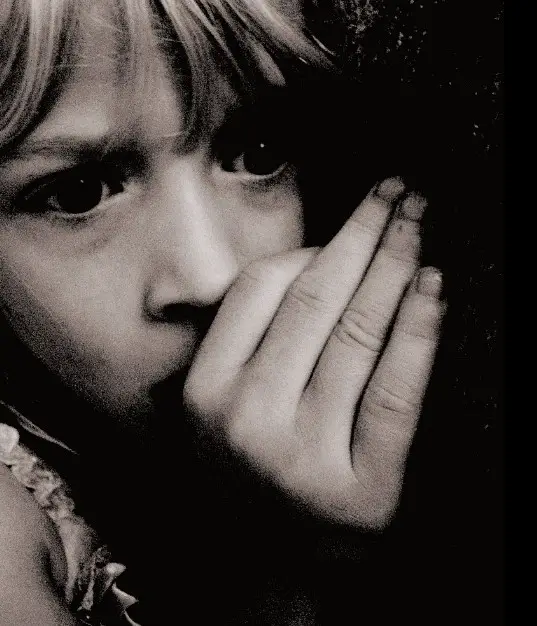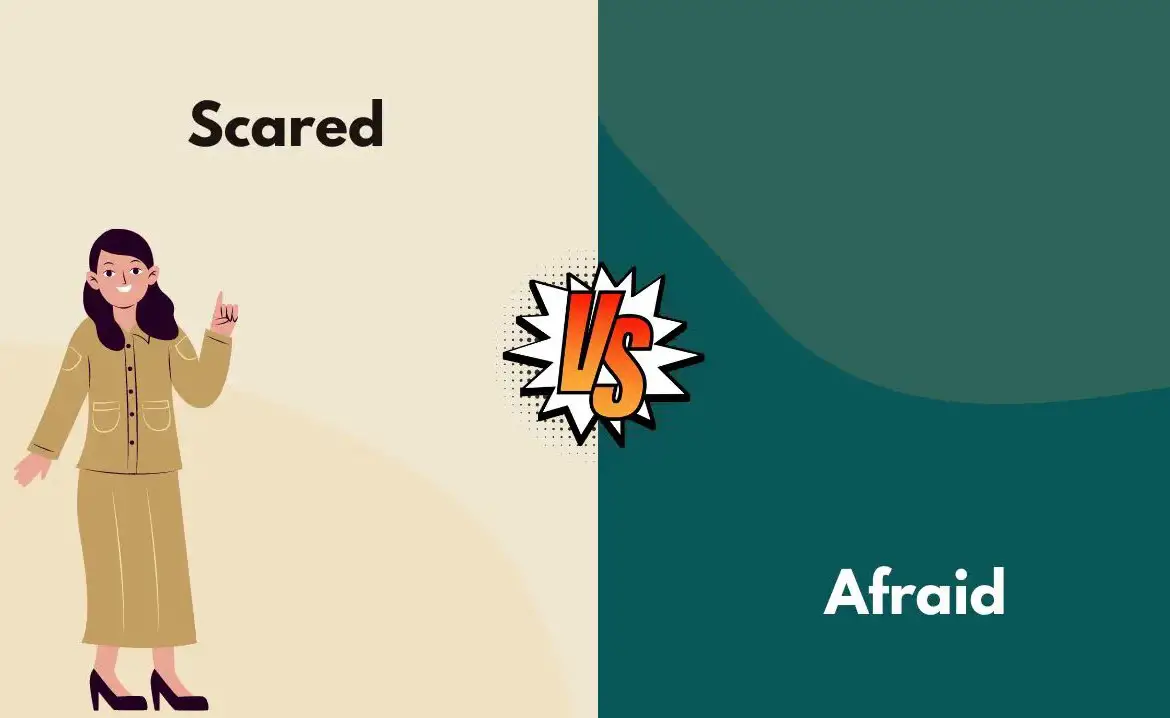Emotions play a pivotal role in the tapestry of human experience, weaving through our daily lives and coloring our interactions with the world. Among these, fear stands out as a fundamental emotion, crucial for survival yet often complex in its manifestations. “Scared” and “afraid” are two words frequently used to describe fear, yet they carry distinct nuances that reflect different aspects of this powerful emotion.
The difference between “scared” and “afraid” lies primarily in their usage and connotations. “Scared” is often used to describe a sudden, immediate reaction to a perceived threat or danger, typically involving a physical or visceral response. On the other hand, “afraid” encompasses a wider range of feelings, from mild concern to deep worry, and is often used in contexts that involve anticipation of future threats or an ongoing emotional state.
Understanding these nuances is more than an exercise in vocabulary; it’s about grasping the subtle ways we experience and communicate fear. While both terms are rooted in the same emotion, their implications for our psychological state, the way we relate to others, and even the strategies we adopt to cope with fear can vary significantly. This distinction not only enriches our emotional vocabulary but also enhances our understanding of the complex landscape of human emotions.

Emotional Vocabulary
The Importance of Emotions
Emotions are integral to the human experience, acting as the language of our internal state. They influence our decisions, shape our relationships, and affect our well-being. Understanding emotions and having a rich emotional vocabulary is essential for effective communication and mental health.
Role in Communication
Emotional vocabulary enables us to express our feelings accurately and understand others better. It fosters empathy and connection, helping us to navigate social interactions more effectively. In environments where emotional expression is encouraged, individuals tend to experience higher satisfaction and cohesion.
Role in Mental Health
A robust emotional vocabulary is linked to better emotional regulation and mental health. It allows individuals to identify and understand their emotions, leading to healthier coping mechanisms. Recognizing the nuances in feelings can be the first step toward addressing emotional challenges and seeking support.
Scared: Overview
Definition
To be “scared” means to experience a sudden, often intense fear that typically arises from an immediate threat. This reaction is usually short-lived and closely tied to the fight-or-flight response.
Common Triggers
- Unexpected noises
- Sudden appearance of a threat
- Real or perceived danger in one’s environment
Physical and Psychological Responses
When scared, individuals may experience:
- Rapid heartbeat
- Sweating
- Trembling
- A strong urge to escape the situation
These responses are the body’s way of preparing to face or flee from immediate danger.
Afraid: Overview
Definition
Being “afraid” involves a more prolonged feeling of fear or apprehension about something that might not be immediately present. It can range from mild unease to deep worry and is often associated with the anticipation of future threats.
Contextual Usage
“Afraid” is used in various contexts, reflecting a broader spectrum of fear. For example:
- Fear of failure
- Apprehension about an upcoming event
- Worry over potential outcomes
Emotional Depth and Duration
The emotion of being afraid can last longer and often involves more complex psychological processing. It might not trigger an immediate physical response but can lead to ongoing stress or anxiety.
Key Differences
Context and Usage
- Scared is typically used for immediate, short-term reactions to threats.
- Afraid often refers to longer-term feelings of fear or anxiety.
Psychological Perspectives
Fear Response Mechanisms
- Being scared activates an acute stress response, preparing the body to deal with immediate threats.
- Feeling afraid involves more cognitive processing, reflecting on past experiences or future possibilities.
Anxiety and Anticipation Aspects
- Anxiety can be a component of feeling afraid, where there’s a pervasive sense of dread about something that may happen.
- Scared usually lacks this anticipatory component, being more about immediate reaction than ongoing concern.
Language and Expression
Colloquial Usage
- “Scared” might be used more colloquially, in everyday language, to describe reactions to specific events.
- “Afraid” carries a bit more formality and can denote a wider range of fear-related emotions.
Expressive Nuances
- The choice between “scared” and “afraid” can convey different intensities and durations of fear, offering nuanced ways to express oneself.

Similarities
Rooted in Fear
Both “scared” and “afraid” are fundamentally rooted in fear. This emotion, essential for survival, triggers the body’s fight-or-flight response, preparing an individual to face or escape danger. Recognizing fear’s role is crucial in understanding human behavior and emotional responses.
Impact on Behavior and Decision-Making
Fear, whether it manifests as being scared or afraid, significantly influences behavior and decision-making. It can deter individuals from taking risks, motivate them to avoid danger, or even paralyze them into inaction. Understanding this impact is key to addressing fear effectively.
Adaptive Functions in Humans
Fear serves adaptive functions by protecting individuals from harm. It heightens awareness and prioritizes safety, which has been critical for human survival throughout evolution. Recognizing fear’s adaptive value helps in appreciating its role in human development.
Impact on Communication
Choice of Words in Expressing Feelings
The choice between “scared” and “afraid” in expressing feelings can affect clarity and understanding in communication. Selecting the appropriate term helps convey the intensity and nature of one’s fear more accurately, enhancing interpersonal interactions.
Misinterpretations and Clarity
Misinterpretations can arise when the emotional context is not clear. Clarifying whether one is “scared” of an immediate threat or “afraid” of a potential outcome can prevent misunderstandings and foster empathy.
Emotional Intelligence and Relationships
A nuanced emotional vocabulary contributes to emotional intelligence, facilitating healthier relationships. It allows individuals to express their feelings precisely, leading to deeper connection and understanding between people.
Coping Strategies
Recognizing Fear Signals
Identifying the physical and psychological signals of fear is the first step in coping effectively. This awareness enables individuals to respond appropriately rather than react impulsively.
Techniques for Managing Fear and Anxiety
- Breathing exercises: Help calm the nervous system.
- Mindfulness and meditation: Enhance present-moment awareness.
- Exposure therapy: Gradually reduces fear response through controlled exposure.
These techniques can be effective in managing both short-term and long-term fears.
Importance of Emotional Vocabulary in Therapy
In therapy, a rich emotional vocabulary allows individuals to articulate their experiences precisely, facilitating better diagnosis and treatment. It empowers clients to explore and understand their emotions in depth.
Cultural Perspectives
Fear Expressions Across Cultures
Cultural differences significantly influence how fear is expressed and perceived. In some cultures, showing fear is considered a sign of weakness, while in others, it’s seen as a normal part of human experience. These variations reflect broader societal attitudes toward vulnerability and strength.
Language Influence on Emotion Perception
The language we use shapes our perception of emotions. Studies have shown that linguistic diversity can lead to differences in how emotions are recognized and categorized, highlighting the interplay between language and emotion.
Everyday Applications
Practical Advice for Using “Scared” and “Afraid” Appropriately
- Context matters: Use “scared” for immediate reactions and “afraid” for longer-term concerns.
- Intensity of emotion: Choose the word that best matches the severity of the fear.
- Audience understanding: Consider the listener’s perspective and select the term that will be most clear to them.
Following these guidelines can enhance clarity and effectiveness in communication.
Enhancing Emotional Expressiveness
Expanding one’s emotional vocabulary allows for more nuanced expression of feelings, fostering greater self-awareness and empathy in social interactions. Encouraging openness about fears can lead to more supportive and understanding relationships.

Frequently Asked Questions
Can “scared” and “afraid” be used interchangeably?
While “scared” and “afraid” both relate to fear, they are not always interchangeable. “Scared” often implies a more immediate, instinctive reaction to a present danger, whereas “afraid” can suggest a broader, sometimes more reflective or anticipatory fear of something that might not be immediately present. Understanding the context and nuance of each can help in choosing the most appropriate word.
How do cultural differences influence the expression of being scared or afraid?
Cultural contexts can significantly shape how emotions are expressed and perceived. In some cultures, expressing fear openly might be seen as a sign of vulnerability or weakness, while in others, it may be considered a normal, healthy response to threats. The preference for using “scared” over “afraid,” or vice versa, can also vary, reflecting deeper cultural attitudes towards fear and vulnerability.
Are there physical differences in how we experience being scared versus being afraid?
The physical responses to being scared versus being afraid can overlap, including symptoms like increased heart rate, sweating, or trembling. However, being “scared” is often associated with more acute, immediate physical reactions to sudden threats, while being “afraid” might produce prolonged physical symptoms due to ongoing stress or anxiety about anticipated dangers.
How can understanding the difference between scared and afraid improve communication?
Grasping the distinction between being scared and being afraid can enhance emotional intelligence and interpersonal communication. It allows for more precise expression of feelings, enabling individuals to convey the intensity, duration, and nature of their fear more effectively. This clarity can improve empathy and understanding in relationships, facilitating more supportive interactions.
Conclusion
The nuanced differences between “scared” and “afraid” enrich our emotional vocabulary, allowing for more precise and meaningful communication of our feelings. Recognizing these distinctions not only aids in self-expression but also fosters a deeper understanding of the complex nature of fear and its impact on our lives.
Embracing this complexity can empower us to navigate our emotional landscapes with greater awareness and sensitivity. By articulating our fears more accurately, we open the door to more empathetic connections with others and a more nuanced approach to our own emotional wellbeing. Ultimately, the words we choose to describe our feelings can shape our experiences of those emotions and our interactions with the world around us.

